While Kansas is a well-known place for its natural beauty, hills, and prairies, it’s also home to 7 incredible tree frogs. These amazing species have been thriving here for a long time.
It is possible to find Blanchard’s cricket frogs, Cope’s gray tree frogs, Gray tree frogs, Strecker’s Chorus Frogs, Spring Peepers, Boreal Chorus Frogs, and Spotted Chorus Frogs while roaming around Kansas.
Now, in this article, you will know about these tree frogs’ lifespan, diet, habitat, breeding zone, mating call, adaptation, size, and predator.
So let’s go below for all this info!
1. Gray Tree frog
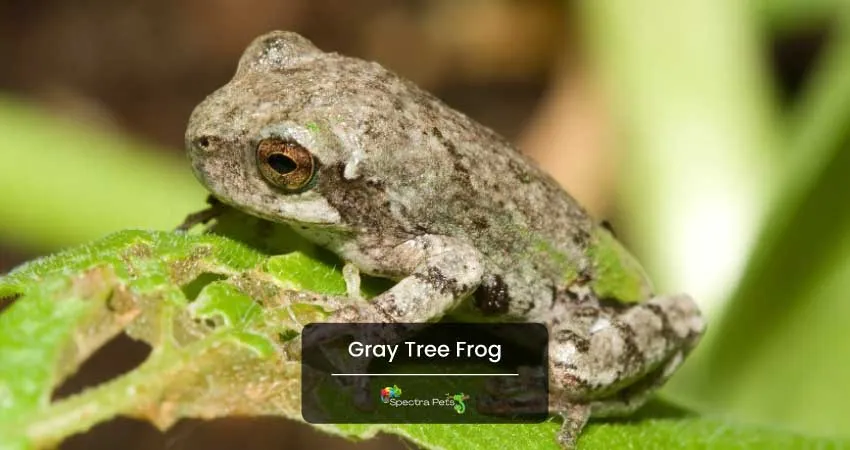
The gray tree frog is a small critter with a big personality. This delightful amphibian is found in wooded areas throughout the eastern United States and Canada. People living in Kansas can find many of them in their backyard if they live close to water bodies.
Not only that it can change its appearance to match its surroundings, but it can also survive in a wide range of habitats, from cold mountain streams, and wooded areas to humid swamps.
If you were to see this frog in two different habitats, you might not even realize that it was the same species! When it is resting on green vegetation, it will be green; when it is resting on brown bark or leaves, it will be brown. Due to their amazing climbing ability, they spend a long time high on the forest canopy.
This amazing species has a typical lifespan for a frog of 7-9 years in the wild. It reaches maturity at around 2 years of age. During the breeding season, which typically occurs from Spring to Summer, the males will sing to attract mates.
Adding to that, females will lay up to 1800 eggs in small clusters on leaves or other vegetation near water. The eggs will transform into froglets after 6-8 weeks. When they reach adulthood this species can be 1.25-2.25’’ in length.
Plus, insects make up the bulk of its diet, but spiders, mites, slugs, plant lice, and other small invertebrates are also fair game.
2. Cope’s Gray Tree frog
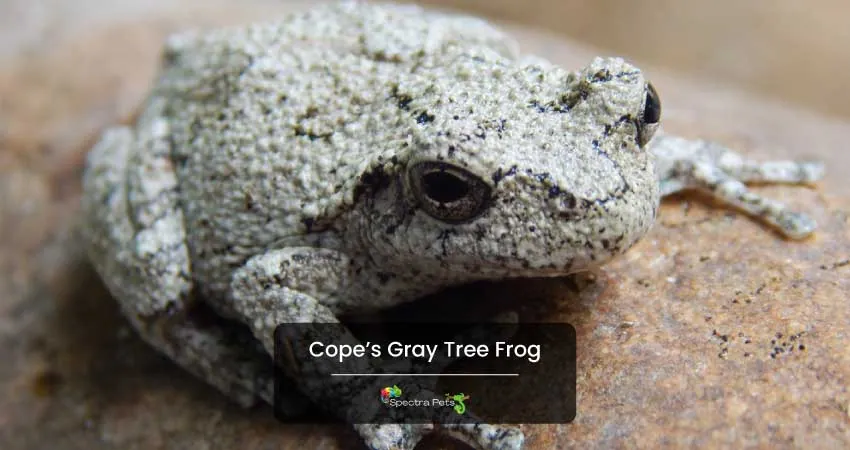
The Cope’s gray tree frog is a small amphibian that is native to the southeastern United States. These timid creatures are typically found in humid forest areas and are most active at night.
Although they are adept at climbing, they usually prefer to stay close to the ground. One of the most distinguishing features of this species is its color. The top of its body is typically a light gray, while the bottom is white. Their dorsal color can be seen in pearl gray, and gray-green too.
However, the frog’s color can change depending on its environment. For example, if it is cold, its body will turn a deeper shade of gray to absorb more heat. The Cope’s gray tree frog typically has a lifespan of 2.5 years, but some have been known to live up to 7 years.
You will be surprised to know that their diet includes a long list of insects like spiders, moths, mites, plant mice, ants, tree crickets, grasshoppers, and beetles. Consuming a significant amount of insects the balance of the ecosystem is ensured.
Breeding usually takes place from March-August. The female will lay her eggs in a small body of water, such as a pond or puddle. Once they are hatched, the tadpoles will spend several weeks developing into froglets. After the metamorphosis is complete, the young amphibians will leave their breeding spot in search of their territory.
Although they are not currently considered to be endangered, they are threatened by habitat loss and pollution. As development projects encroach on their natural habitat, these small amphibians are becoming increasingly rare.
3. Blanchard’s Cricket Frog
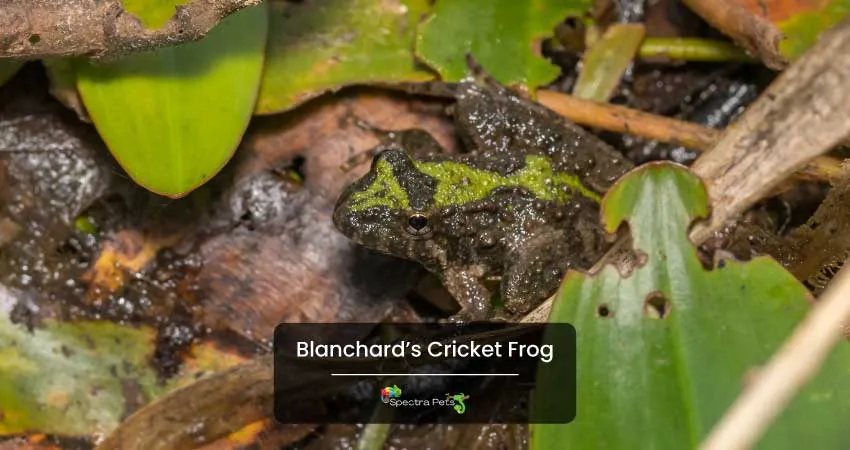
Not only native to Kansas, but this tiny tree frog is also found in Ohio, Texas, and other Southeastern portions of the USA.
Their calling sound makes them stand apart from other species as they can call anytime day or night. The size of this beauty can vary from 0.6 to 1.5″.
Moreover, their referable habitat is mud flats, rivers, fens, marshes, lakes, and low prairies. Their breeding process occurs from June-July. Slow-moving water zone or small water bodies are their favorite breeding spot.
Unfortunately, a large number of these frogs face death & only 5% survive the winter without any problems. Their skin color can vary from olive green to brown to greenish tan or gray. These colors give them a natural advantage to get blending with the background color.
Plus, these frogs stay active both day & night when summer enters. Like other states, their number is low in Kansas.
In regards to food, they grab and swallow any insects they can fit inside their mouths. Using their senses when they feel threatened by a higher predator, they directly jump into the water to save themselves.
4. Spotted Chorus Frog
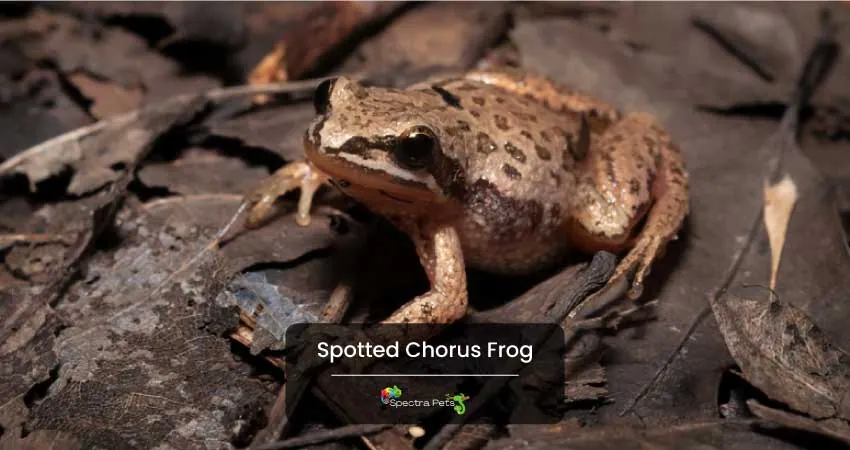
Native to Kansas, the spotted chorus frog is found in Texas and Oklahoma. Their staple food list consists of insects, plants, moths, crickets, beetles, and flies. In their wild habitat, the average lifespan is close to 2 years old.
Plus, the soft-moist skin frog can be seen in different colors like gray, brown, green, olive-green, etc. The female is bigger and bulkier than the male. While their size can vary from 1.2-1.6’’, they are between 3-4.2 grams in weight.
Due to their stable population, the spotted chorus frog is listed as the least concerned amphibian. When winter comes, this little critter burrows itself underground & goes for a long hibernation.
In addition to that, their favorite breeding soot is cattle tanks, temporary pools, grassy ponds, and marshes. These species love to engage in mating immediately after the rainfall in both summer & spring. In one season, the female can lay up to 1500 eggs.
For living, this cute animal chooses grassland, canals, meadows, prairies, etc. They are frequently hunted by fish, salamanders, birds of prey, water snakes & garter snakes.
Though they are solitary animals in the breeding period, a lot of them get together in one big water body. Using the vocal chord & sac, the male makes a high pitch wank wank call repeatedly to draw the attention of the female.
5. Spring Peeper
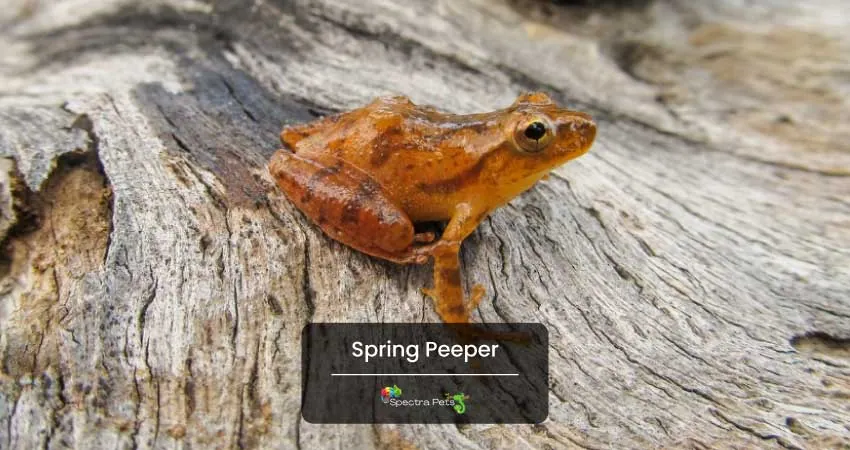
The presence of spring peepers in Kansas is far beyond the green line. This little frog with a 0.9-1.5’’ size is an intelligent one that deceives its predator by tuning its skin hue. Color variation of this species can vary from brown, tan, gray reddish, and pink to brown.
Also, they love spending their daytime under forest leaves. However, they unleash their monstrous insectivores nature and keep hunting beetles, mites, spiders, and ants. If you look at other Hylidae family members their average lifespan of 3-4 years is much better.
To run away from the predator this species can climb on trees using their sticky toe pad. Like every animal, they have their unique sign which is a cross mark on the back.
Plus, you can tell the difference between males & females by overseeing the size & color. Male appear with darker skin & small body size while females have light skin hue & bulky.
Moreover, their favorite habitat includes moist zone, grassland, and wooded area which is adjacent to shallow water. Due to their hibernation activity, winter feels no big deal to them.
When breeding season comes closer, the male starts making a high pitch trill that has a 90-decibel sound level. They engage in mating activity from April and continue up to June. Right after the mom frog lays eggs, the juvenile frog grows within the next 3 months and keeps moving to its habitat.
6. Boreal Chorus Frog
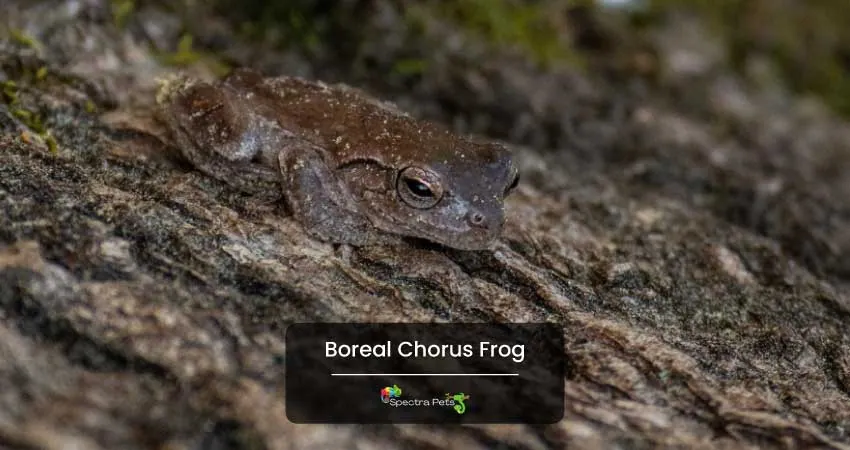
Among all the amphibians thriving in Kansas, the Boreal chorus frog is one of the teeny-tiny amphibians. Their dorsal color is available in brown, reddish, olive and gray, etc. A full-grown female can reach up to 1.5’’ in length, however, the male is a bit smaller.
It’s uncommon to encounter them in open places close to their habitat. They are highly expert at hiding & keep on their feeding journey at night due to their nocturnal attitude. The stripe marks on their backside are a unique sign to recognize them easily.
When it comes to the habitat, they just love staying in slow-moving water zones like woodland ponds, flooded fields, roadside ditches, etc. Although they are excellent climbers, they spend a big time on the habitat floor to keep eating versatile insects.
Adding to that, the diet list is made of spiders, mites, earthworms, and slugs. As they consume all these it provides a huge benefit to the local ecosystem. For the breeding purpose, the male frog enters the temporary water body and starts calling the female to continue the reproduction process.
Along with Kansas, this species is widely available in a significant part of North America. This species is a big fan of habitat with a slow water body that includes flooded fields, woodland ponds, small lakes, roadside ditches, and marshes.
They are one of those few frogs that enter into hibernation in the freezing winter. And come back when the spring returns.
7. Strecker’s Chorus Frog
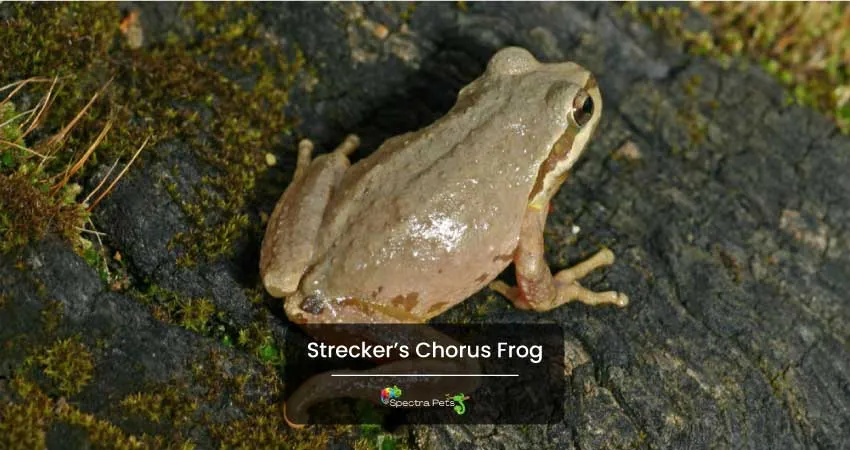
Undoubtedly they are large-size tree frogs that can grow up to 2’’ long. As they don’t have big toe pads, they are not good at climbing trees. The dorsal color of this species can be gray or greenish-brown or grayish-brown. Also, they have brown or green color blotches on their back.
They are found in multiple habitats like cypress swamps, shady woods, rocky ravines, drainage channels, grasslands, sand prairies, and canals. Adding to that, this nocturnal amphibian likes to burrow under the soil which saves them from predators and extreme heat.
One of their unique skin marks is a triangular shape spot on their head. This critter survives by eating a significant amount of small arthropods. Another interesting attribute of this species is they use their foreleg to burrow themselves under the soil.
When it comes to breeding, this magnificent creature selects small ponds, flooded fields, and temporary pools as the mating spot. The breeding time of this frog starts in November and continues up to March. The native people of Iowa will call in later winter and the beginning of spring.
Moreover, the population in Iowa and other states like Oklahoma, Kansas & Louisiana has stable growth. Thus they are listed as the least concerned frog in these states.
During mating season, the male approaches the female with a high pitch call that sounds like a squeaky wheel. The average lifespan of this amphibian is 1.5-2 years in the wild.
Final words
I was lucky to collect all the relevant & detailed info about the tree frogs in Kansas. Indeed these are just packed with surprising facts.
Irrespective of your working field, I expect these articles’ information gives you a good reading time.
Tree Frogs Found in the Nearby States of Kansas:

